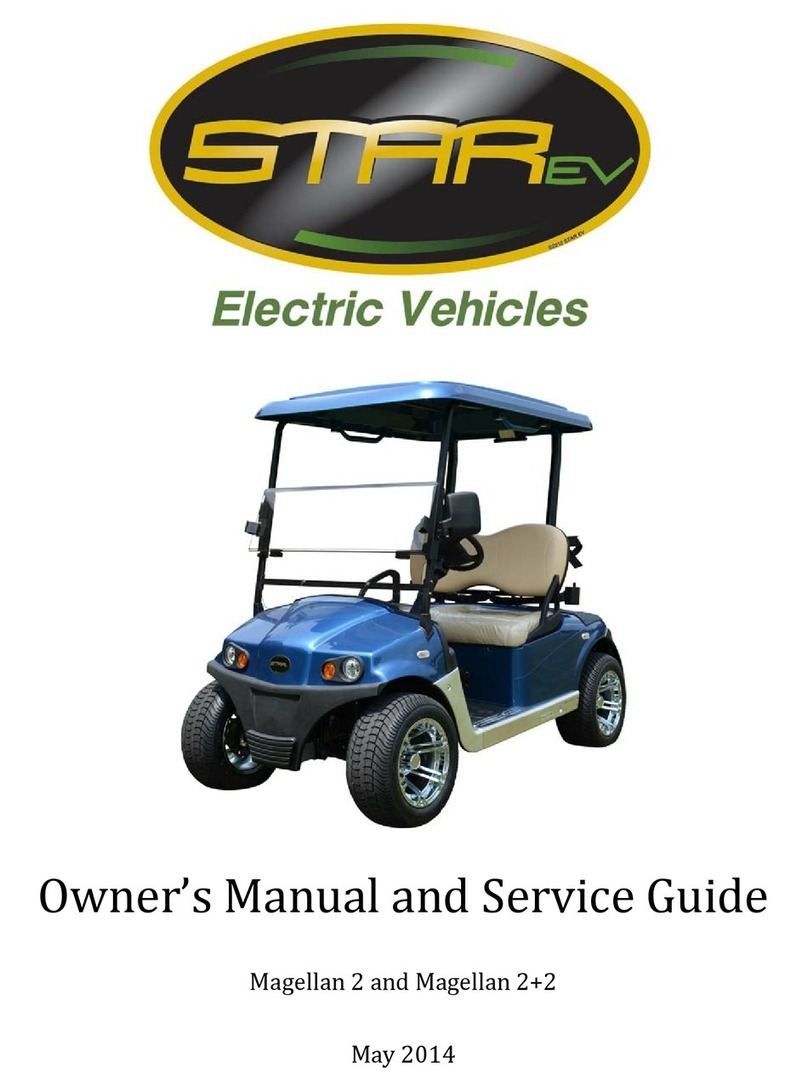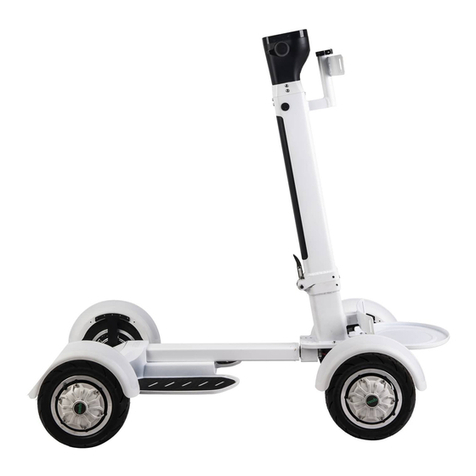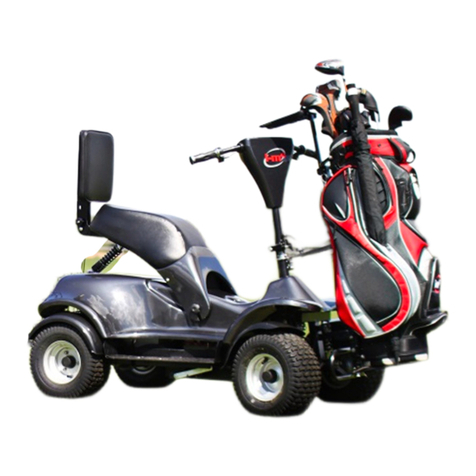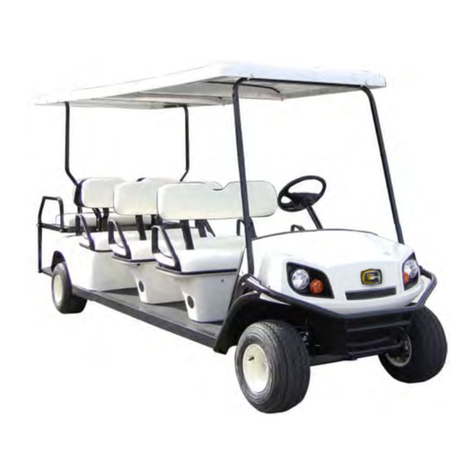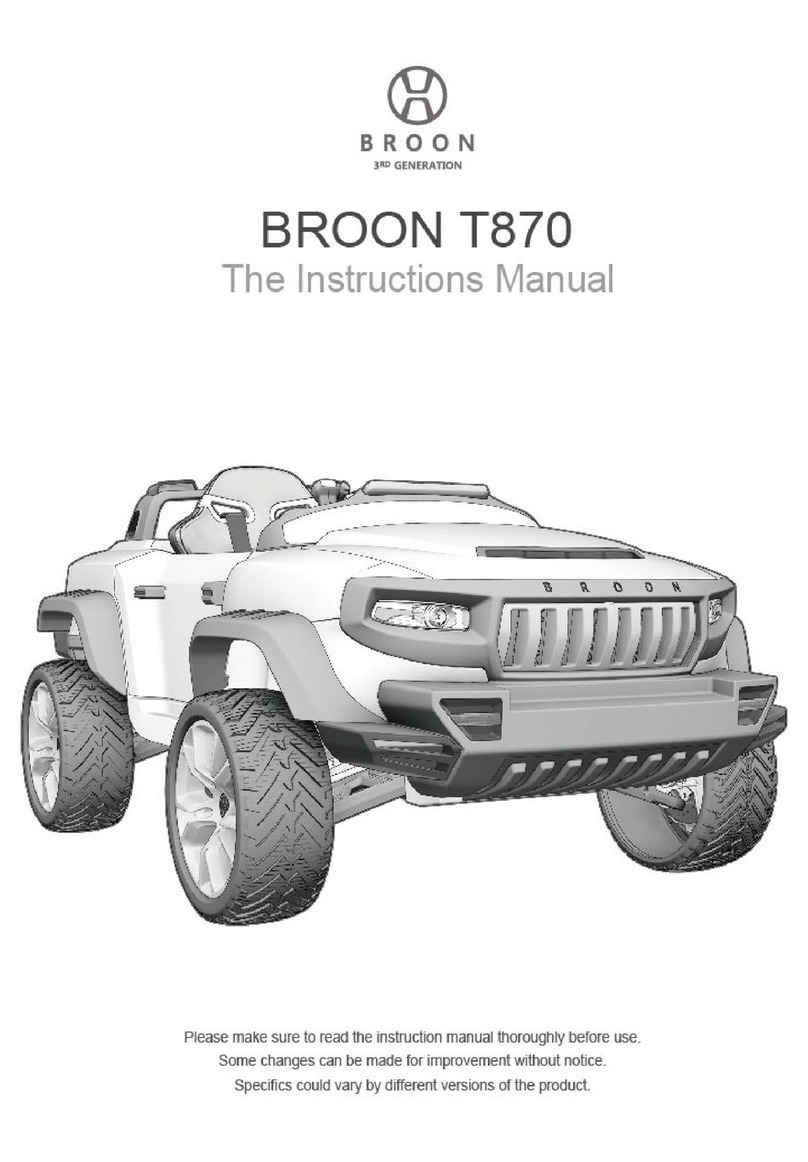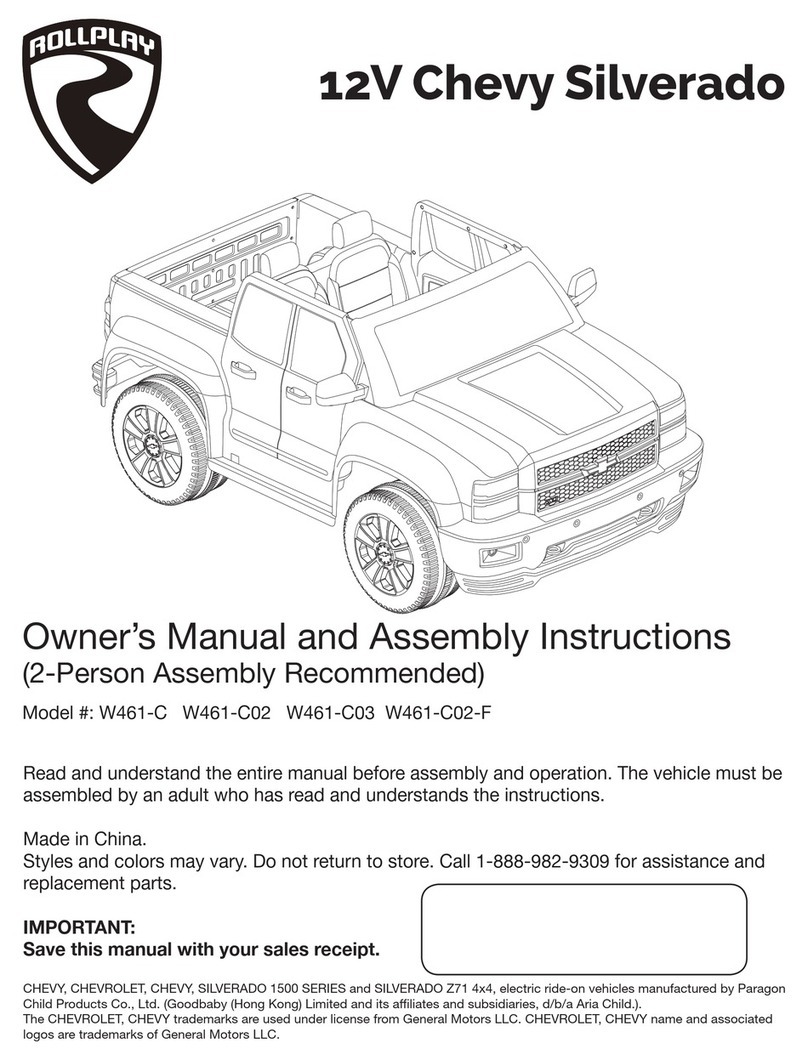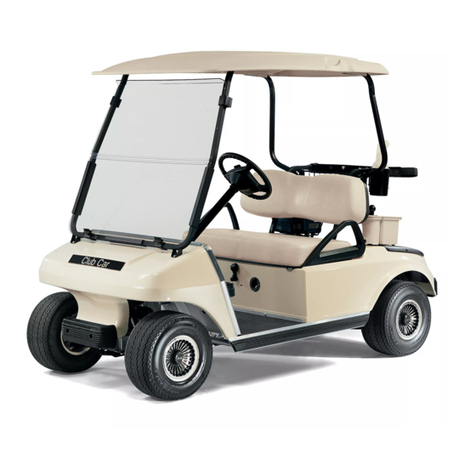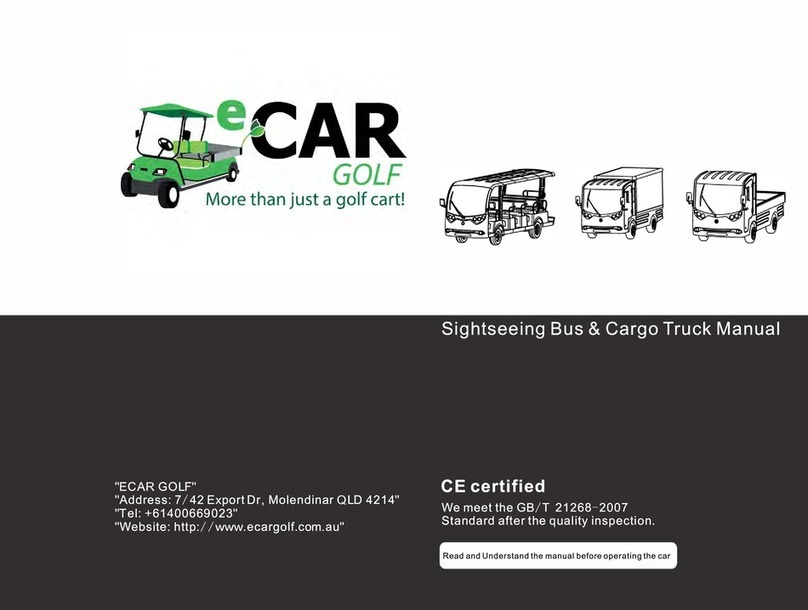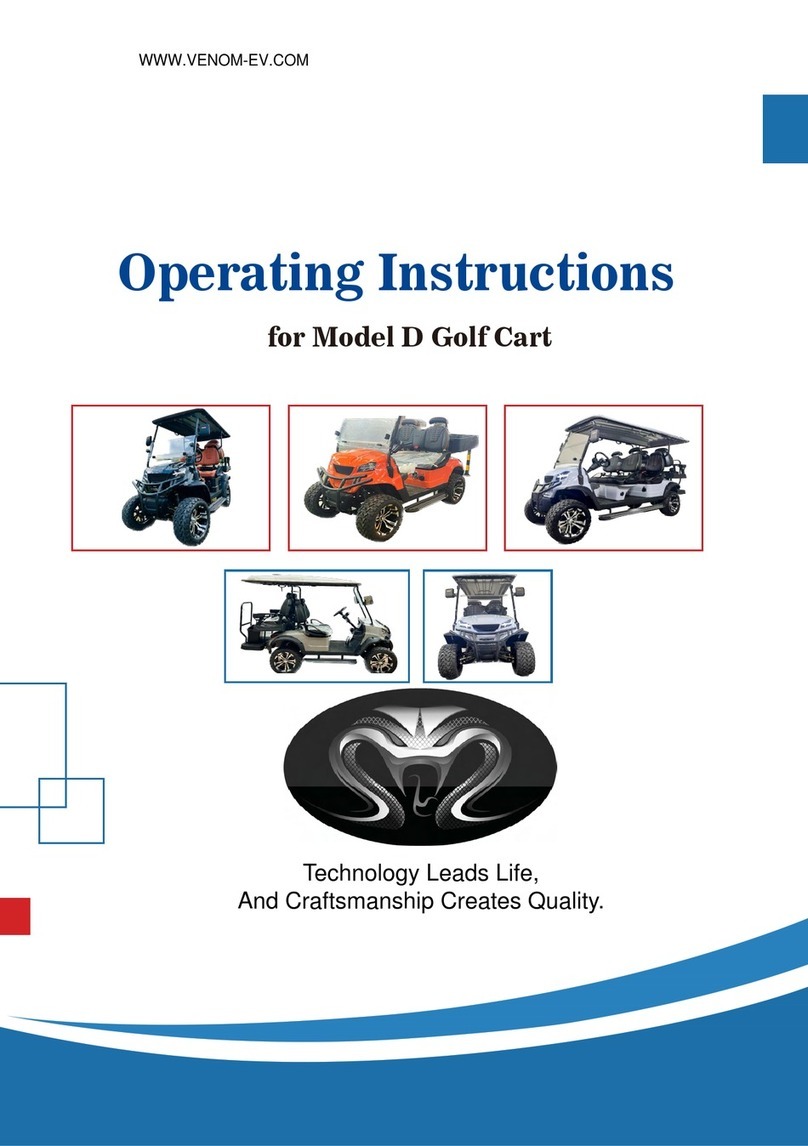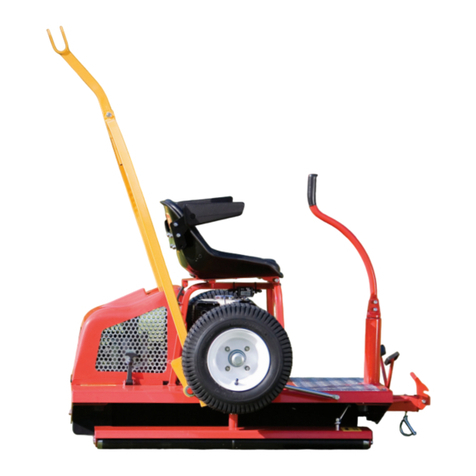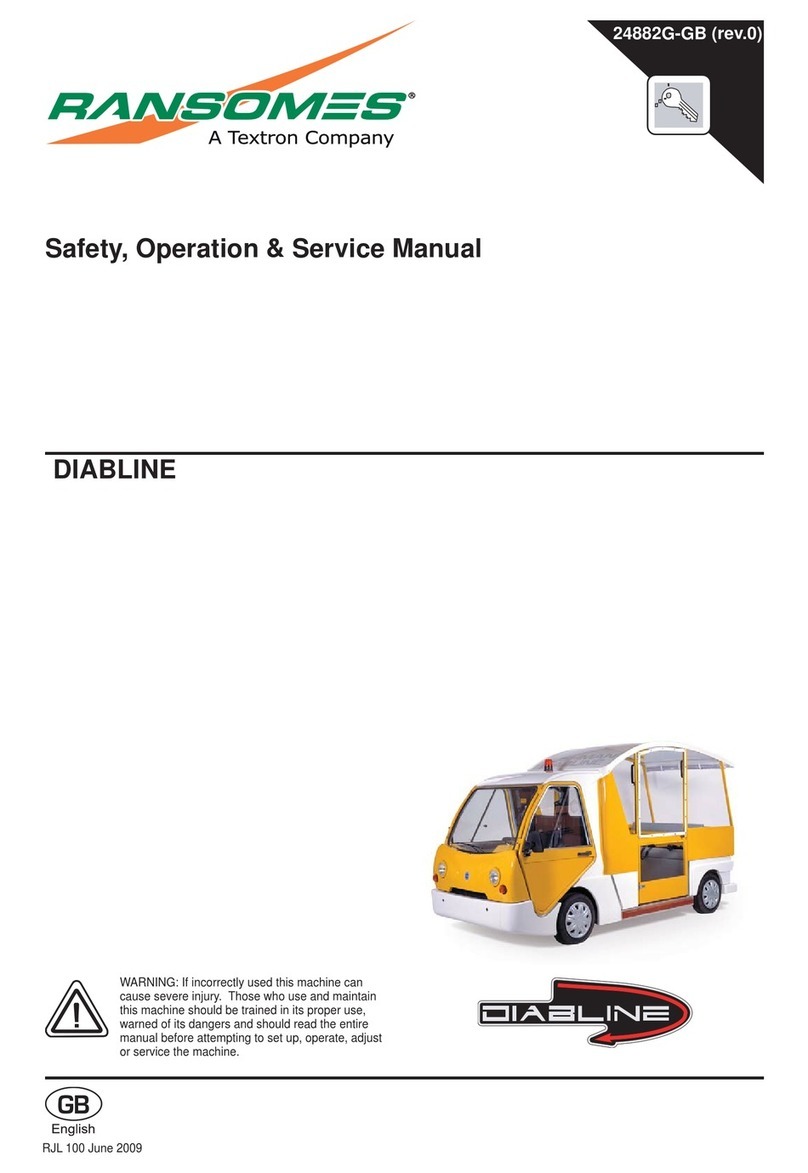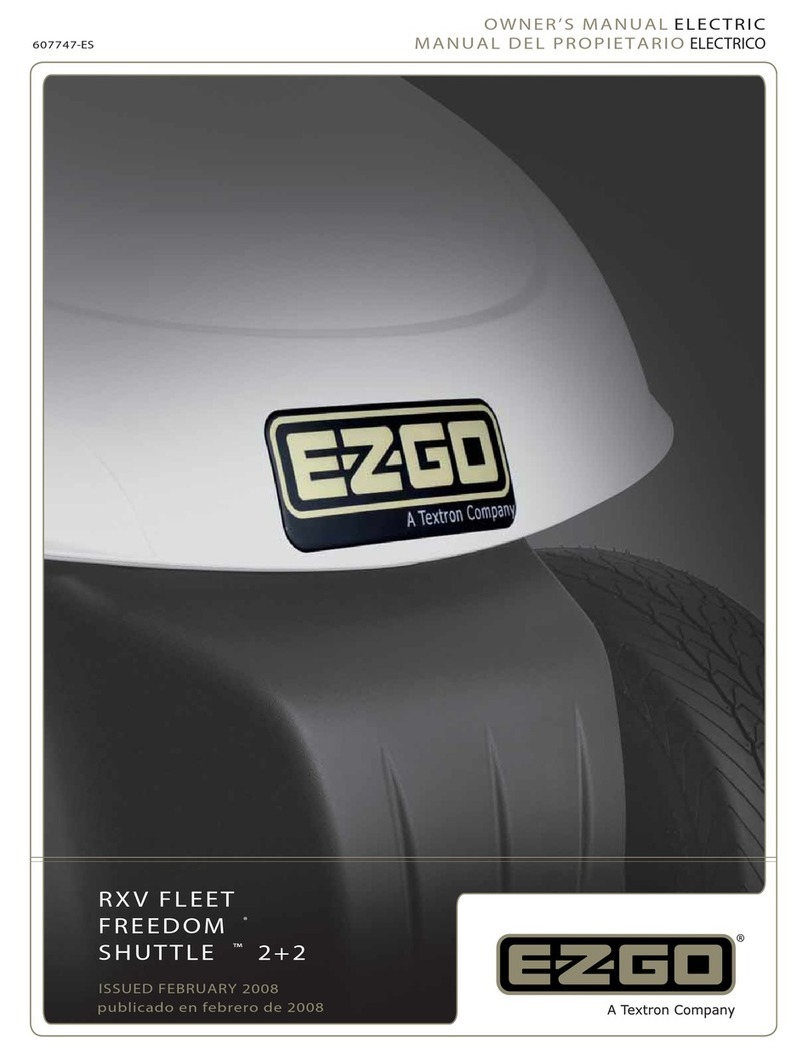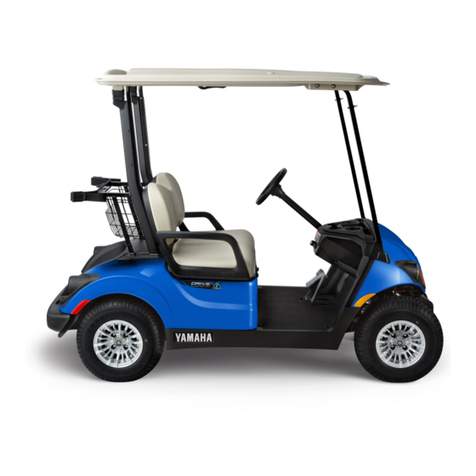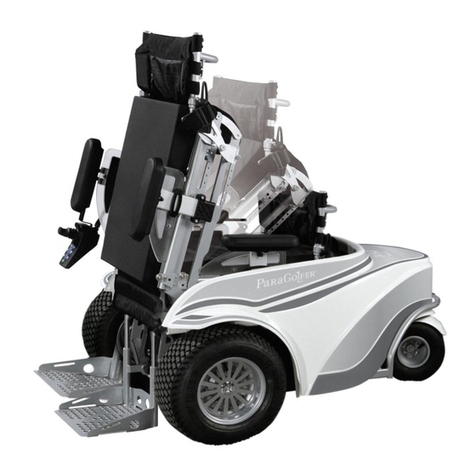MadJax Storm X Series User manual

1
Owner’s Guide
ISSUED NOVEMBER 2022

2
Thank you for your purchase of a MadJax XSeries electric vehicle. Prior to operation, please thoroughly read this
Owner’s Manual. Please note that some items are optional accessories and may not be installed on your vehicle
from the factory.
This manual includes important safety and maintenance information that is crucial to ensure the safe operation
of your vehicle. Most maintenance can be performed with common automotive hand tools; otherwise, contact
your nearest dealer/service provider.
Vehicle warranty information is appended to this manual. For warranty service, please contact your original
dealer or another local authorized MadJax XSeries dealer. Dealers can be located using the MadJax XSeries
website.
All information provided in this manual is protected by copyright and may change without notice. All rights
are reserved. This manual may not be photocopied, reproduced, or translated into another language without
the express written consent of Nivel Parts and Manufacturing, LLC ("Company"). The Company has the right to
make design changes without the responsibility of updating previously produced units.
INTRODUCTION

3
Introduction............................................................................................................................................ 2
Vehicle Specs......................................................................................................................................4-5
Identication......................................................................................................................................6-7
Important Notices................................................................................................................................8
Safety Precautions ......................................................................................................................... 9-11
Vehicle Safety Labels.........................................................................................................................12
Pre-Operation Checklist...................................................................................................................13
General Operation........................................................................................................................14-16
Magnetic Brake....................................................................................................................................17
Lead Acid Battery Maintenance............................................................................................18-19
Reliance Lithium Battery Operation Instructions ........................................................20-21
Battery Charging .........................................................................................................................22-23
Troubleshooting / Charger Codes ....................................................................................... 24-25
Vehicle Maintenance........................................................................................................................26
Vehicle Storage Procedure ..................................................................................................... 27-28
Tire Pressure / Wear Condition....................................................................................................29
Vehicle and Battery Storage........................................................................................................ 30
Lead Acid Battery Storage .............................................................................................................31
Reliance Lithium Battery Storage..............................................................................................32
Reliance Lithium Battery Tips......................................................................................................33
Controller Fault Codes .............................................................................................................. 34-35
Warranty ......................................................................................................................................... 36-39
TABLE OF CONTENTS

4
VEHICLE SPECS
POWER
POWER 48-Volt Lithium or Lead Acid
MOTOR TYPE Reliance AC Motor
HORSEPOWER (KW) 6.7 hp (5 kW) Continuous
WIRING 3 Gauge Cables Throughout
DC CONVERTER 30 Amp Reliance Voltage Reducer
BATTERIES (QTY/TYPE) 48v Lithium or 6 x 8v batteries
KEY OR PEDAL START Pedal
BATTERY CHARGER Reliance On-Board Charger
w/3.0 m AC Cord
SPEED CONTROLLER 400-Amp Reliance Solid-State
AC Controller
DRIVETRAIN Motor Shaft Direct Drive
TRANSAXLE Open Differential with Helical Gears
GEAR SELECTION Forward-Neutral-Reverse
Rotary Style Switch
REAR AXLE RATIO
DIMENSIONS
OVERALL LENGTH 92.7 in (235.5 cm)
OVERALL WIDTH
WHEEL BASE
FRONT WHEEL TRACK 37.0 in (94 cm)
REAR WHEEL TRACK 38.8 in (98.5 cm)
GROUND CLEARANCE
@ DIFF.
BODY & CHASSIS
FRAME Welded Steel with Hot Dipped
Galvanized Protection
BODY & FINISH Injection Molded
Polypropylene

5
VEHICLE SPECS (CONT’D)
STEERING & SUSPENSION
STEERING Double-Ended Rack and Pinion
FRONT SUSPENSION MacPherson Strut
REAR SUSPENSION Mono-Leaf Springs with Hydraulic Shocks
SERVICE BRAKE Front/Rear Hydraulic Disc Brake
PARKING BRAKE Electromagnetic Park Brake
DRY WEIGHT 573 lb (260 kg)(without battery estimated)
CURB WEIGHT 992 lb (450 kg) estimated for 4 pass
VEHICLE LOAD CAPACITY 800 lb (363 kg)
OUTSIDE CLEARANCE CIRCLE 22.9 ft (7 m)
SPEED (LEVEL GROUND)

6
IDENTIFICATION
The Serial Number is located on the front of the frame, on the dashboard, and on the steering column,
as shown.
2301ST104S******
Example serial number
shown for reference

7
IDENTIFICATION (CONT’D)

8
IMPORTANT NOTICES
This vehicle is designed for off-highway use in compliance with the safety standards for golf cars. It is not
equipped from the factory with systems required by automotive industry safety standards (including but
applicable local and federal laws for on-road use must be followed by the end user, including the addition of
the vehicle per state laws. The Company is not liable for any illegal use of this vehicle.
Important safety precautions will be noted by the below symbols. This manual should be read in its entirety
before attempting to operate or service the vehicle. The Owner’s Manual must always stay with the vehicle.
The CAUTION symbol indicates
conditions that can cause minor
bodily injury.
The WARNING symbol indicates
conditions that may cause
serious injury or death.
The DANGER
personnel and/or assets.

9
• RISK OF ELECTRIC SHOCK. Ensure the charger AC cord is connected to a properly
grounded outlet. Always disconnect charger AC plug before servicing vehicle.
• Ensure all battery connections are tight, making good contact, and are free of corrosion.
• Never attempt to disassemble, modify, or service the Lithium-Ion battery or charger.
electrical shock. Contact The Company Technical Support for assistance if the battery
or charger is not working properly.
• This vehicle does not provide protection from major weather hazards such as lightning
• Batteries placed in this vehicle may release explosive gases. To reduce risk of fire,
keep away from sparks and/or flames. Always charge vehicle on a non-combustible
surface such as concrete.
• Keep vehicle well ventilated during charging. Do not attempt to operate vehicle while
charger cord is connected.
• Only qualified technicians should service vehicles. Anyone performing service should
be experienced in electrical and mechanical repairs. Always wear proper safety
equipment when servicing the vehicle, including but not limited to safety goggles
and gloves.
• Use insulated tools when making or removing battery connections.
SAFETY PRECAUTIONS

10
warranty.
Place run/tow switch into TOW position prior to servicing the vehicle.
When servicing the vehicle, make sure the key is in OFF position and chock the wheels. Use
jack stands if the vehicle is raised. Getting under a vehicle supported by an unstable jack or
jack stands may lead to serious injury or death.
Ensure vehicle warning labels are in place. If transferring ownership of the vehicle, provide
this manual to the new owner. Contact your dealer for replacements if necessary.
Always review the vehicle per the operation checklist prior to driving. If any checks are
failed, DO NOT OPERATE THE VEHICLE prior to repairing the issue.
SAFETY PRECAUTIONS (CONT’D)

11
• Drivers must have a valid driver’s license. Operate only in designated areas in accordance with local,
state/province, and/or national law.
• Always drive at a speed consistent with terrain and weather conditions.
• When going up or downhill, if possible, drive straight up or down the hill, not crossways. Never drive
• Sudden stops or change of direction can lead to a loss of control.
• Never allow more passengers than the vehicle is designed to have (two people per bench seat
maximum).
• Never leave children unattended with the vehicle. Remove the key when exiting the vehicle.
• When backing up, check all directions and drive slowly and carefully. Never disconnect the reverse
alarm.
•
death may occur.
SAFETY PRECAUTIONS (CONT’D)
DURING OPERATION:

12
VEHICLE SAFETY LABELS

13
• BATTERIES
• Ensure battery connections and tie down bolts are tight.
•
least monthly.
PRE-OPERATION CHECKLIST
With the key in the OFF position, perform the below checks prior to operation. Failure
to ensure the key is OFF may lead to severe injury, death, and/or property damage. For
checks requiring the key to be on, be ready to turn off and/or press the brake pedal if
unexpected movement occurs.
• ACCELERATOR
• Check operation of accelerator pedal for smooth travel when pressing and releasing.
• BRAKES
• Check operation of the brake pedal for smooth travel when pressing and releasing.
•
•
• Make sure the park brake releases by powering the car on and lightly pressing accelerator pedal.
Turn off key and ensure the brake locks again (audible click should be heard).
• REVERSE ALARM
• Turn the ignition ON and turn the RND knob to "R". The reverse alarm should sound.
• STEERING
• Check for abnormal free play in the steering wheel by moving the steering wheel slightly left to
right.
• TIRES
• Check tire air pressure per the tire sidewall or manufacturer recommendation. Typical golf car
tires should be between 20-22 psi.
• Check tread for excessive/uneven wear, deformation, or punctures.
• Verify all 4 tires are wearing evenly.

14
GENERAL OPERATION
USB/12V Output
Cup Holder
Braking Pedal
Accelerator Pedal
Battery Gauge
Hazard
Light Switch*
*Some vehicles may have the switch on the dash
Knob Gear Shifter
(RND Selector)
Key Switch
Steering Wheel

15
GENERAL OPERATION (CONT’D)
OPERATING THE VEHICLE:
After performing all pre-drive checks, ensure that the vehicle park brake is engaged and the Run/Tow
switch underneath the passenger side of the front seat is in the Run position.
2. Insert the key into the ignition and turn it ON. Turn the RND knob to D for forward or R for reverse.
3. Slowly press the accelerator pedal and begin driving.
4. When stopping or slowing down, slowly release the accelerator pedal, then slowly apply the brake pedal
as needed. Always come to a complete stop and press and hold the brake pedal before changing from
forward and reverse directions.
5. When steering, slow down as necessary to safely make the turn. Turning too sharply may cause a loss of
control.
SETTING PARK BRAKE:
Bring the vehicle to a complete stop, then turn the key to OFF.

16
GENERAL OPERATION (CONT’D)
ROTARY SWITCH
KEY SWITCH
RUN/TOW SWITCH
The three letters stand for
Drive, Neutral and Reverse.
Power-on Key
Insert the key and turn
clockwise, now the car is
ready to go. When you
come to a complete rest,
turn the key counterclock-
wise to “OFF” for power
shutdown.
Turn the key to “OFF” position.
2. Flip open the seat and switch
the controller to “TOW” position.
Now it is safe to tow the vehicle.
The motor and rotating parts will
be free from damage.
RUN & TOW
Switch

17
MAGNETIC BRAKE
MANUALLY DISENGAGING MAGNETIC BRAKE
Never put the car in TOW or manually disengage the e-brake on a sloped surface. If it
is necessary, one person MUST be in position to hold the service brake pedal and steer
the vehicle before releasing park brake. Failure to do so can lead to injury and/or vehicle/
property damage.
the e-brake, use an 8mm wrench to tighten the two bolts
on the outside of the brake as shown. See image to the
right. Move the vehicle to a safe location, then loosen the
two bolts again. Verify that the park brake is holding the
vehicle before leaving unattended.
The magnetic parking brake automatically engages every time your vehicle comes to a complete stop. It is
disengaged by pressing the accelerator pedal when the ignition is ON and gear selector is in D or R.

18
(Lead-Acid Deep Cycle Batteries Only)
LEAD ACID BATTERY MAINTENANCE
• Water levels should be checked at least monthly (time can vary by individual use or climate; it is
recommended to check more often) by visual inspection through the caps on each battery. Check prior to
charging batteries.
• If water level is below the top of the plates, add ONLY distilled/deionized water until battery plates
are barely covered.
• After charge is completed, add additional distilled/deionized water until battery plates are covered
•
damage the vehicle and/or surfaces underneath the vehicle.
• Ensure all vent caps are tight.
•
• If there is corrosion, make sure caps are tight, then clean the batteries with a baking soda and water
solution. Wipe up or rinse thoroughly to prevent damage to surfaces beneath the vehicle.
• Do not over-tighten battery connections. This can damage or destroy the battery posts.
•
•
putting the vehicle in storage, fully charge the battery and move the Run/Tow switch to TOW.
• When replacing batteries, it is recommended to replace the entire set and use all batteries of the same
model.
ALWAYS wear safety goggles and rubber gloves when performing battery maintenance.
Battery acid may burn the skin and/or clothing. Keep sparks away and never smoke while
working near batteries.

19
(Lead-Acid Deep Cycle Batteries Only)
LEAD ACID BATTERY MAINTENANCE (CONT'D)

20
RELIANCE 105 Ah LITHIUM BATTERY OPERATION INSTRUCTIONS
SAFETY WARNING
Please read the operating instructions carefully before use, and follow detailed safety instructions to reduce
any risk:
materials, such as brick, concrete or metal.
2.
the sun for long lengths of time.
3.
4. To prevent the risk of electric shock, do not disassemble the battery. Should you have any questions about
warranty terms.
5. To prevent the risk of electric shock, do not short-circuit or reverse-connect the two ends of an
uninsulated battery.
6. Do not place the battery in an environment with high static electricity or strong radiation.
7. The battery system should not be used in environments that have corrosive elements, explosives,
insulation- destroying gases or conductive dust.
8. Please disconnect and stop charging the battery immediately and check the plug area if there is any
peculiar smell, smoke, overheating, etc. in the charging process.
Table of contents
